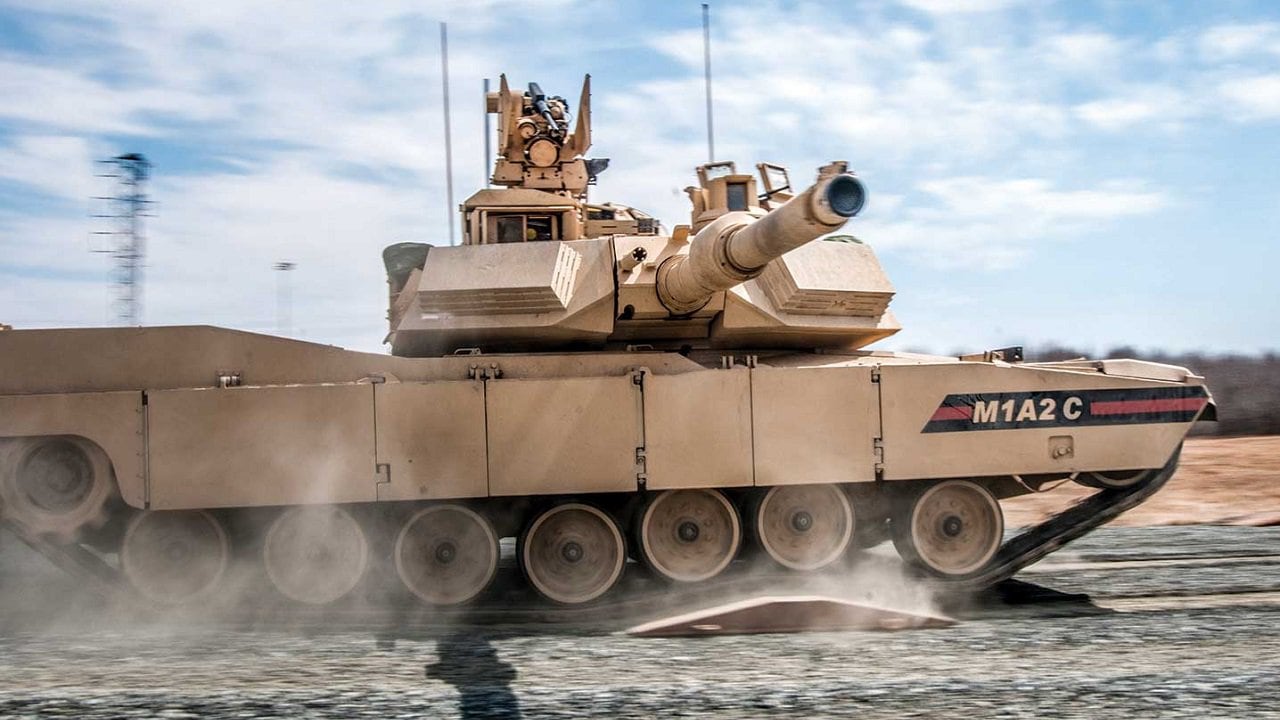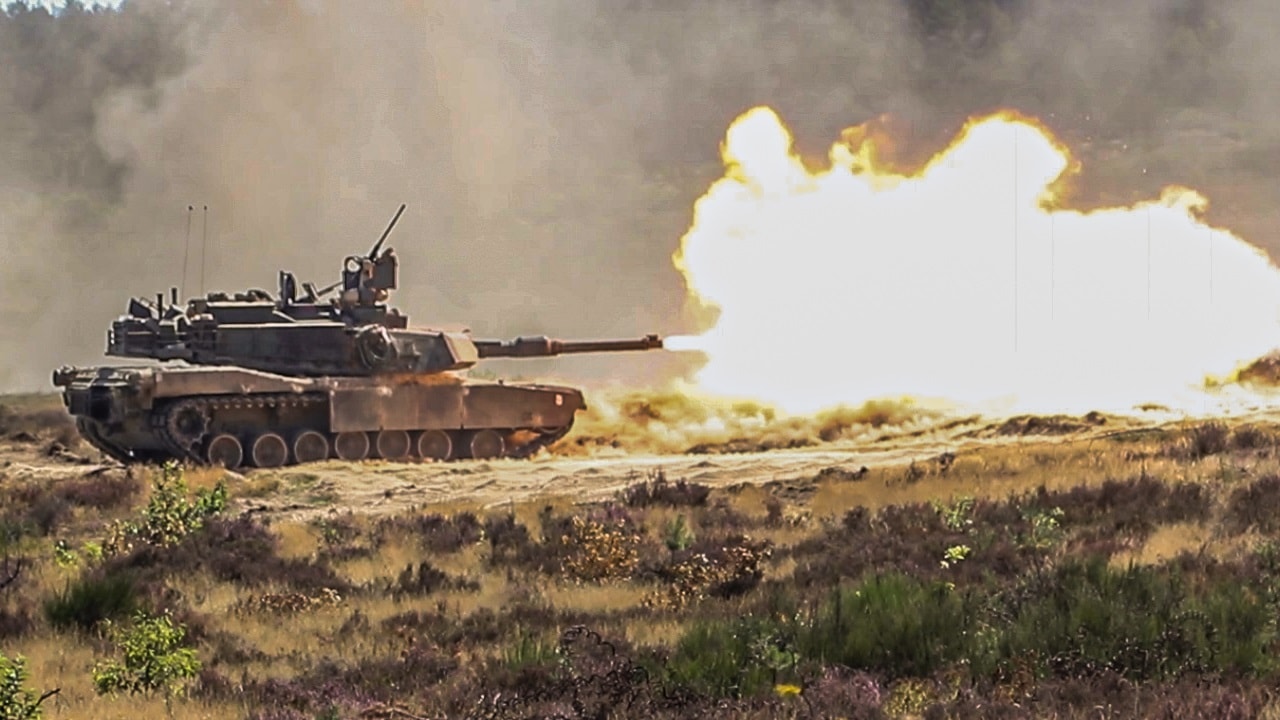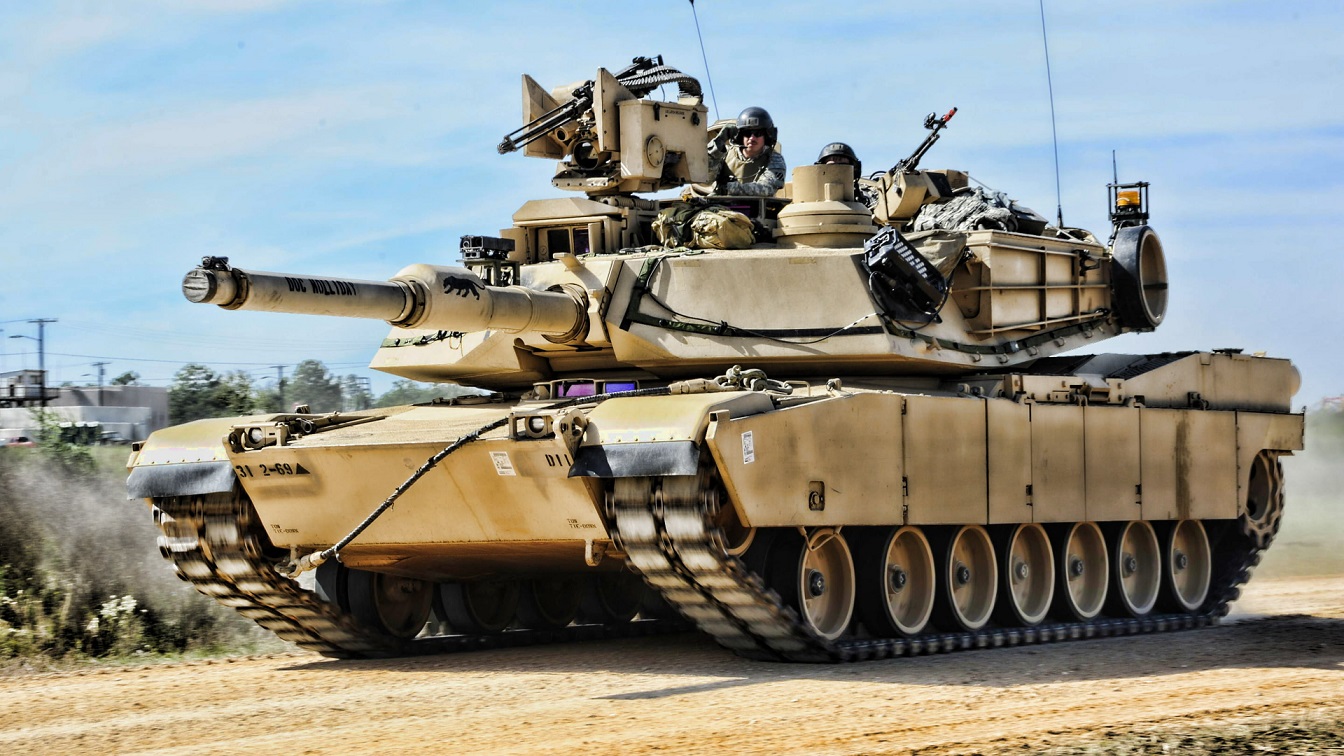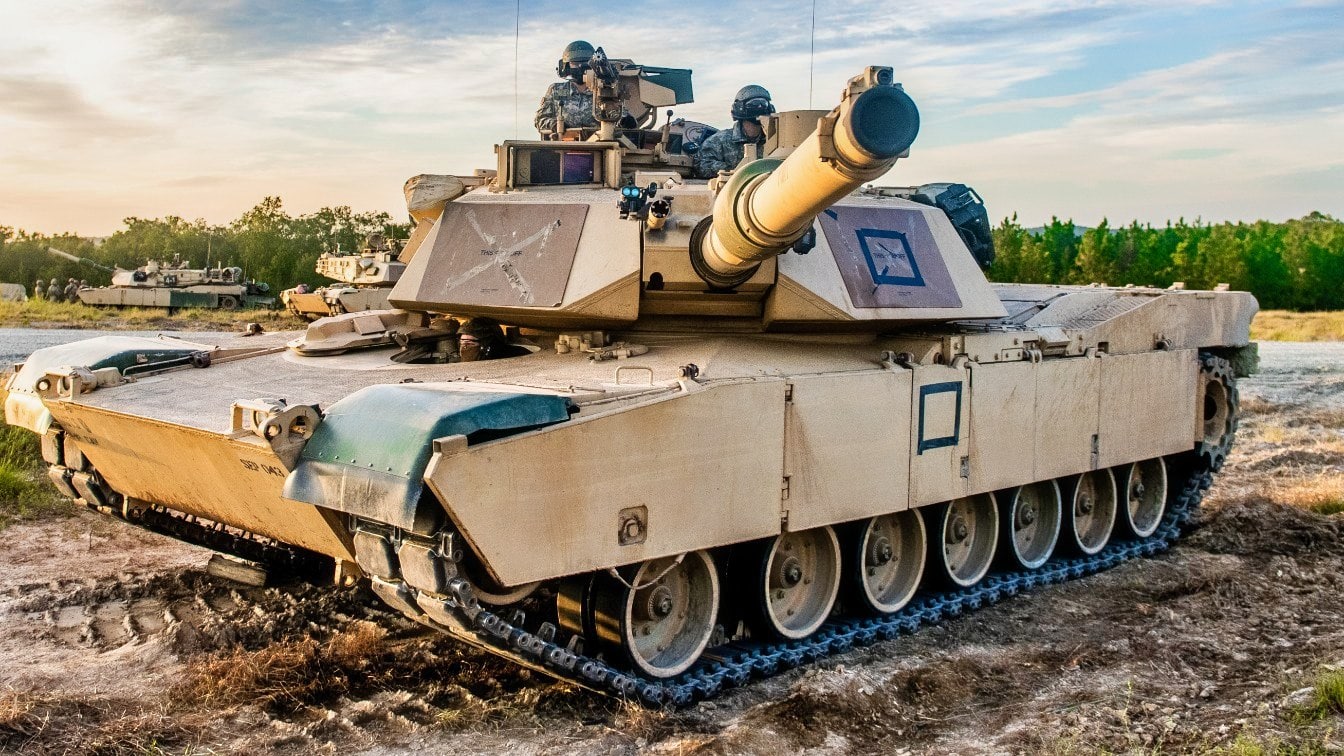A recent article written by David Axe highlighted a Ukrainian Leopard 2A4 tank that supposedly got hit by as many as 10 Russian FPV drones. The tank, despite the ammunition detonating, was eventually recovered and is undergoing repairs.
The event highlights the difference in sturdiness between Western-made MBTs and their Soviet/Russian counterparts. Indeed, thousands of Russian-made tanks have been destroyed in the Ukraine war since 2022.

The Abrams Main Battle Tank closes with and destroys the enemy using mobility, firepower, and shock effect.
To be fair, in a war as heavily propagandized as the Ukrainian war, such stories should be taken with a grain of salt.
However, it is worth examining why Western tanks are generally superior to their Russian adversaries.
Tanks: A Tale of Two Design Philosophies
Western tank design, particularly from the United States, Germany, and the United Kingdom, emphasizes a balance of firepower, crew protection, and mobility. The strategic objective is to create highly survivable tanks capable of engaging enemy forces at long ranges while providing robust security to the crew.
Western MBTs are designed to operate in a variety of environments, from open battlefields to urban settings, and often prioritize advanced technology integration.
Soviet and later Russian tank designs have pretty much always emphasized quantity over quality. The strategic objective is to produce large numbers of tanks that can overwhelm the enemy through sheer numbers and tactical flexibility. Soviet tanks are designed to be rugged, reliable, and easy to maintain, with an emphasis on mobility and firepower over protection. This design philosophy originated in WW2 and has been guiding eastern designs ever since. Only with the development of the T-14 did the Russians finally start shifting their design priorities.
Crew Protection
Western tanks prioritize crew protection through advanced armor systems. The M1 Abrams, for example, uses composite armor, including depleted uranium layers, to provide exceptional protection against kinetic and chemical energy threats. Western tanks are designed to minimize the possibility of ammunition explosions as much as possible through the use of blowout panels and isolated ammo compartments.
Hence, why the Ukrainian Leopard mentioned earlier can survive even after sustaining so many hits. Western tanks have also been trying to integrate active protection systems (APS) like the Trophy system, which can intercept incoming projectiles.
Western tanks also typically have larger crews, usually four members: commander, gunner, loader, and driver (with the exceptions of the French, Japanese, and South Korean tanks). This allows for specialized roles and better overall performance but increases the size and complexity of the tank. Western tanks also emphasize crew comfort and ergonomics, with more spacious interiors and advanced communication systems.

U.S. Army M1 Abrams Main Battle Tank variation fires at a target at Bucierz Range at Drawsko Pomorskie Training Area, Poland, August 11, 2020. DEFENDER-Europe 20 was designed as a deployment exercise to build strategic readiness in support of the U.S. National Defense Strategy and NATO deterrence objectives. In response to COVID-19, DEFENDER-Europe 20 was modified in size and scope. Phase I of the modified DEFENDER-Europe 20 was linked to exercise Allied Spirit, which took place at Drawsko Pomorskie Training Area, Poland, June 5-19 with approximately 6,000 U.S. and Polish Soldiers. In phase II of the modified DEFENDER-Europe 20, a U.S.-based combined arms battalion will conduct an emergency Deployment Readiness Exercise to Europe July 14-Aug. 22.
Soviet tanks, on the other hand, use a combination of composite and reactive armor. Reactive armor, such as the Kontakt-5 and Realikt used on the T-90, explodes outward upon impact to neutralize incoming projectiles. This gives Soviet/Russian tanks a robust and usually reliable level of protection. While effective, reactive armor can be less dependable than composite armor and may require frequent replacement. Soviet tanks also employ APS, but these systems are much rarer and are only recently making their way to frontline troops.
Soviet tanks often have smaller crews, usually three members: commander, gunner, and driver. Using autoloaders eliminates the need for a dedicated loader, reducing crew size and tank profile. However, this can lead to cramped interiors and less ergonomic designs, affecting crew performance over long periods.
In addition, the Soviet-style autoloader and the ammo hastily stored in the fighting compartment make soviet tanks very delicate and prone to violent ammunition explosions.
Technology: Where the West Wins
Western tanks have always focused on integrating cutting-edge technology, including digital battlefield management systems, advanced sensors, and networked communication systems. These technologies enhance situational awareness, coordination, and overall combat effectiveness. Western tanks also feature modular designs that allow for easy upgrades and customization. The downside is that this technology significantly drives up the cost of western tanks and can reduce the total number of units made.

M1 Abrams Tank. Image Credit: U.S. Army.
Soviet tanks focus on robust, proven technologies that can be easily mass-produced and maintained. While modern Russian tanks like the T-14 Armata are beginning to incorporate more advanced technologies (at least on paper), traditional Soviet designs always prioritize simplicity and reliability over technological sophistication.
This approach ensures that tanks can be quickly repaired and returned to service. The downside to the Soviet approach is that tanks generally possess less awareness and often lack the information needed to take individual initiative.
The East Can Make More Tanks
Due to their advanced technologies and materials, Western tanks are generally more expensive to produce and maintain. The high cost reflects the emphasis on quality and performance, but it comes at the cost of manufacturability. Western countries often invest heavily in fewer, more capable tanks.
Production is the one area in which Soviet tanks beat out Western designs. Soviet tanks are designed to be cost-effective and easy to produce in large numbers. This approach allowed for the rapid expansion of armored forces, a key component of Soviet military strategy.
The lower cost and simpler design make Soviet tanks more accessible to various countries.
In the end, Western designs chose to emphasize crew safety and technological superiority over cheapness in quality. The Soviets/Russians, on the other hand, continue to opt for quantity over quality.
Which design philosophy is superior? It depends on the conflict. In short, in smaller-scale wars, the Western philosophy is dominant, but in large-scale protracted wars of attrition, the Soviet philosophy eventually wins out at a high cost.
About the Author:
Isaac Seitz, a 19FortyFive Defense Columnist, graduated from Patrick Henry College’s Strategic Intelligence and National Security program. He has also studied Russian at Middlebury Language Schools and has worked as an intelligence Analyst in the private sector.

